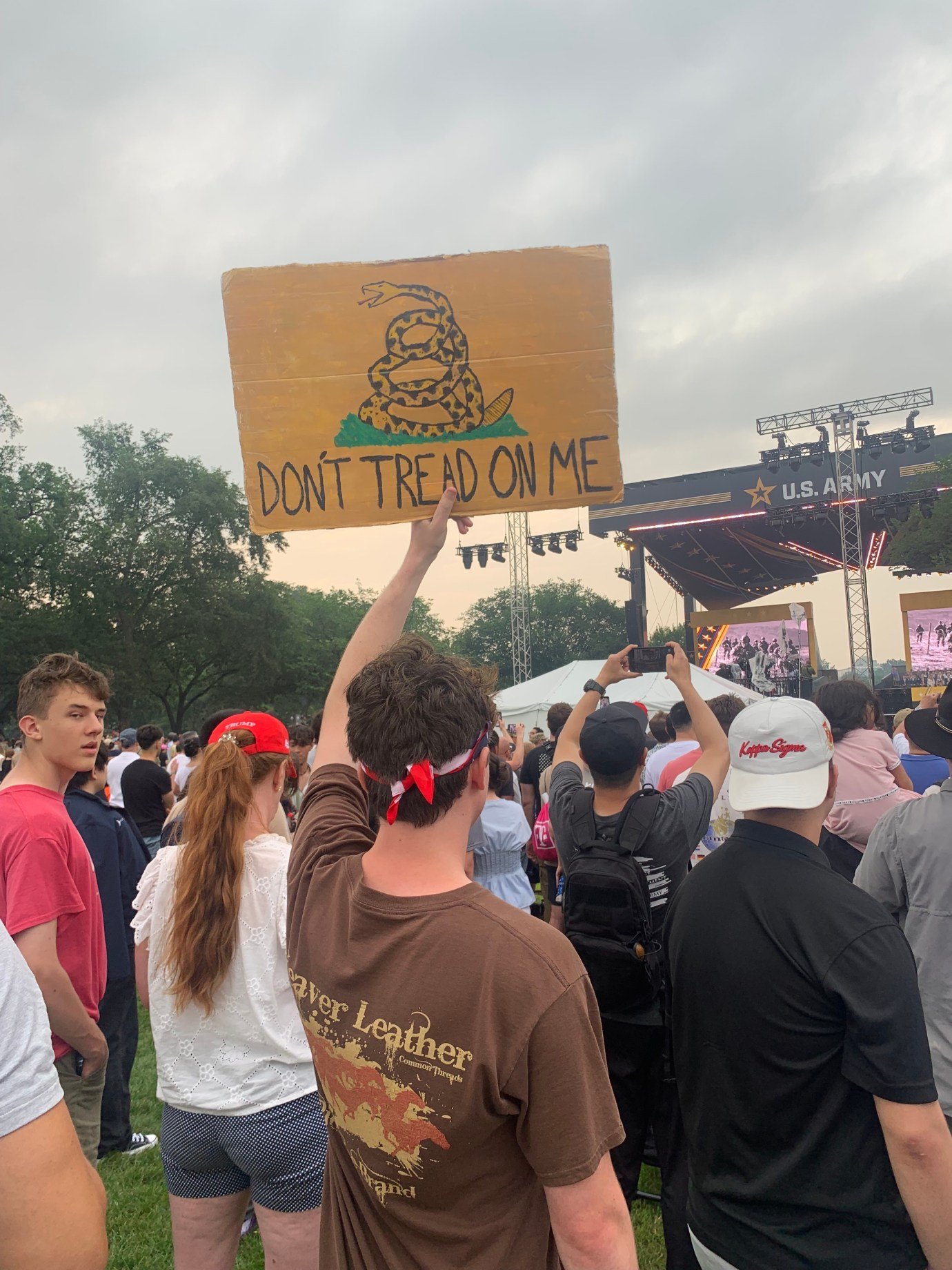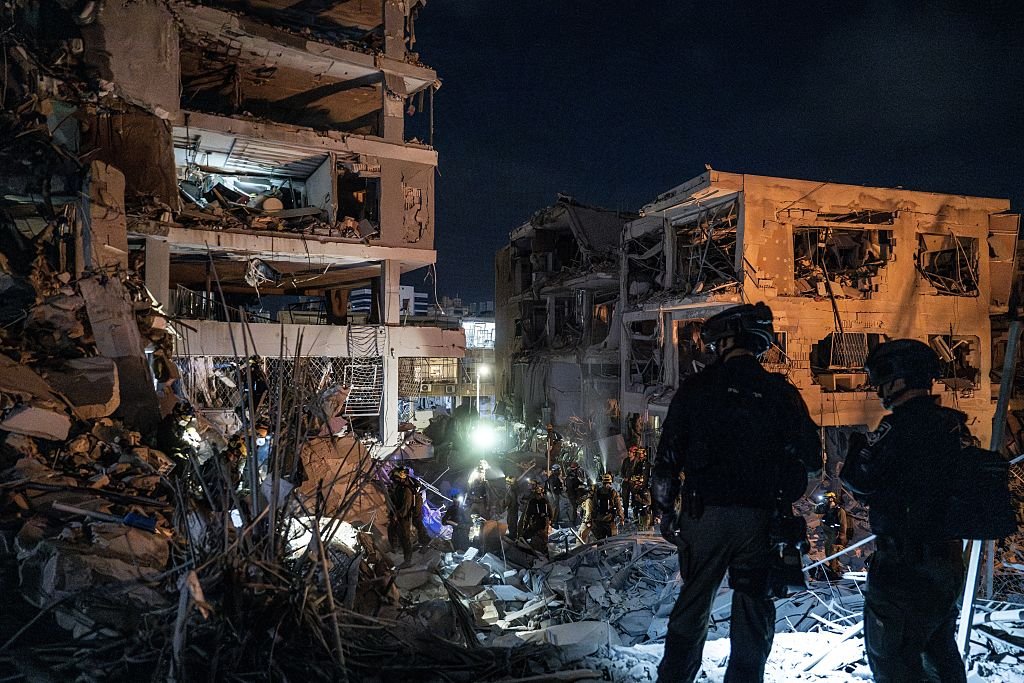At the time of publishing, Iran’s missile attacks on Israel since Friday have left at least 24 people dead, according to Israeli officials, and more than 500 injured. The vollies have largely centered on densely populated areas rather than strategic targets, in some cases bringing down entire apartment buildings. On Saturday night, for example, a missile struck an Arab city east of Haifa, killing four women in the same family. Early Sunday morning, a direct hit to a residential building in the central city of Bat Yam killed at least nine people, including three children. Two additional barrages on Sunday night and early Monday morning reportedly killed eight others. Senior Israeli officials estimate that between 10 and 15 percent of missiles have broken through the country’s air defenses, despite U.S. participation in tracking and intercepting the incoming attacks
But Israel’s surprise attack late last week appears to have blunted at least some of Iran’s initial response. According to a report by the New York Times, Iran initially planned to launch as many as 1,000 ballistic missiles at Israel in the event that war broke out. But Jerusalem’s opening wave of attacks targeted not only Iranian missiles but also the military officials responsible for ordering their use. By the time Tehran launched its first missile attack some 17 hours later, it was able to fire just 100 missiles. Early Monday morning, an Israel Defense Forces spokesman claimed the Israeli Air Force had destroyed one-third of Iran’s ballistic missile launchers and established “full aerial superiority” over the Iranian capital of Tehran.
Israel continued its strikes against Iranian military targets over the weekend, while also setting its sights on the country’s energy assets. The Shahran oil depot outside of Tehran, two natural gas refineries in Bushehr, and an oil refinery in Shahr Rey—one of Iran’s largest—were all reportedly targeted, causing oil prices to climb. Israeli warplanes also hit symbols of the Iranian regime, including Tehran’s police headquarters, the Ministry of Intelligence, and the foreign ministry headquarters.
Israeli attacks on Iran’s nuclear sites have also continued, but there may be limits to the damage Jerusalem can inflict. Israeli forces reportedly struck Iran’s Fordow nuclear site overnight, for example, but satellite imagery showed only limited damage to the enrichment plant built into the side of a mountain. “The bad news is that there are still centrifuges enriching. The bad news is that there’s still a large highly enriched uranium stockpile. The bad news is that Fordow, the heavily fortified fuel enrichment plant under almost 300 feet of rock in central Iran, is still intact,” Behnam Ben Taleblu, the senior director of the Foundation for Defense of Democracies’ Iran Program, told TMD. “While the Israelis have been very militarily successful, there is still a lingering question mark over the counter-proliferation operation that triggered this whole thing.”
Meanwhile, Israel has largely refrained from targeting the Islamic Republic’s senior political leaders, though officials have indicated that it’s not entirely off the table. Asked by ABC News on Sunday whether Jerusalem would go after Khamenei, Israeli Ambassador to the U.S. Yechiel Leiter demurred. “I think it’s fair to say that nobody who is threatening the destruction of Israel should be off the target list,” he said, “but we’re not going to discuss specific individuals.” According to multiple reports this weekend, however, Israel had the opportunity to target Khamenei—but didn’t after President Donald Trump made clear that he opposed the move.
Since Friday, the U.S. president has alternately applauded the Israeli offensive and called for an end to the war. “I think it’s time for a deal,” Trump told reporters on Sunday. “But sometimes they have to fight it out, but we’re going to see what happens.”
Iranian officials, meanwhile, have sought to leverage American fear of escalation to indirectly pressure Israel to end the war. Tehran has threatened to block the Strait of Hormuz, a vital choke point for the world’s oil and gas supply, and it has also vowed to attack U.S. and European bases in the region should they help defend Israel.
But as long as the fighting continues, the Islamic Republic has more to lose than just its nuclear program. “The regime excels at crisis management and crisis escalation, but once that tips over into outright war, and particularly conventional war, that is not a strong suit for the regime,” Ben Taleblu said. “We are watching right now, in real time, what amounts to an Israel-Iran war that was started by an Israeli attempt to stop the regime from developing a nuclear weapon, but could well escalate into a much larger counter-regime strategy.”
‘It Feels Un-American’

WASHINGTON, D.C.—Washingtonians geared up this weekend for a potential flashpoint between opponents and supporters of Donald Trump: a large military parade marking the 250th anniversary of the U.S. Army that just so happened to fall on the same date as the U.S. president’s 79th birthday. Parade organizers predicted a crowd of 200,000 would descend on the National Mall, and many D.C. natives anticipated counter-protests, part of the nationwide “No Kings” protests that also occurred Saturday.
But parade attendance fell far short of expectations, leading to a relatively subdued and apolitical affair. Across the nation, however, millions of protesters participated in rallies against the White House and its policies, leading to a stark contrast in political energy between downtown D.C. and the rest of the country.
A military parade in Washington, D.C., has long been on Trump’s wish list, although military advisers talked him out of it during his first term. Critics of the event pointed to how seldom such parades are held in the nation’s capital—the last one was held after the U.S. victory in the first Gulf War—and the perception that the show of military might have been a pretext to celebrate the president’s birthday, as no such parades are currently planned for the 250th anniversaries of the Navy and the Marines later this year.
But Saturday’s parade didn’t resemble the military parades of countries like North Korea, Russia, or even France, which tend to feature blocks of armed soldiers in full dress and squadrons of combat vehicles. Instead, small columns of soldiers, unarmed and in fatigues, marched alongside units wearing uniforms and driving vehicles from a variety of historical U.S. conflicts ranging from the Revolutionary War to Desert Storm.
The arrangement led to some bewildering contrasts: At one point, soldiers dressed as U.S. Cavalry from the 1870s, complete with covered wagon, trotted by as P-50 Mustang fighters from World War II flew overhead. Overlooking the parade route was a sign from one of the event’s sponsors: Coinbase, a cryptocurrency exchange.
While there were certainly many attendees donning “Make America Great Again” hats, most of the crowd on Saturday appeared to be military families, veterans, or simply tourists. And to many, politics were of secondary importance. “I’m just glad that we can all be here together, regardless of our beliefs, regardless of our opinions, and just be together without having to resort to anything unpleasant,” William Wimmer, a DMV resident, told TMD.
But politics, specifically relating to the president, were also clearly motivating factors for some. “It’s the first time we’ve been to an event like this, but we always try to come and support Trump,” said Matthew Rosan, a D.C. resident in attendance. “[But] I think mostly people are here for the Army.” John Thomas, who held a large “Trump 2024” flag, told TMD that he was at the parade to “celebrate the country and the sacrifices the troops have made.”
Many active-duty soldiers who were present, either on their own time or volunteering, simply appreciated the public support. “I’ve been getting a lot of support, a lot of ‘thank you for your service,’” said William Ford, who has served in the Army for 11 years and was passing out water to attendees. “From my vantage point, it looks like everyone’s here to celebrate the Army.”
The relatively low-key nature of the parade stood in contrast to the “No Kings” movement, which organized more than 2,000 separate protests across the country on Saturday. In New York, marchers filled multiple blocks along Fifth Avenue; in Seattle, city officials said 70,000 people showed up to protest downtown. Smaller protests were also held in locales as wide-ranging as Glendale, Arizona, West Palm Beach, Florida, and Florence, Alabama—official events were organized almost everywhere except downtown D.C., a deliberate choice by organizers. “Instead of allowing this birthday parade to be the center of gravity,” they wrote, “we will make action everywhere else the story of America that day: people coming together in communities across the country to reject strongman politics and corruption.”
The protests and law enforcement response were almost entirely peaceful, with the notable exceptions of mounted police forces briefly advancing on protesters who allegedly threw rocks and bottles in downtown Los Angeles and police using tear gas to disperse protesters who remained for hours in front of the I.C.E. building in downtown Portland, Oregon. A 39-year-old man was also shot on Saturday at a protest in Salt Lake City, Utah, and later died from his injuries, though law enforcement officials said he was not the “intended target” of the shooting. Many demonstrators donned traditional American symbols, including American flags, “Don’t Tread on Me” signs, and Statue of Liberty costumes.
Organizers also framed the protests, which were mostly in objection to Trump’s aggressive use of presidential power, as stretching back to the Revolutionary desire to cast off monarchy. “We love the United States, even with all its imperfections, because it was founded on the idea of rejecting monarchy, of saying no to concentrated, unchecked power,” actress Ilana Glazer said in a speech at New York City’s protests.
But the protests also had a markedly liberal tilt, often related to the administration’s anti-immigration efforts. “I’m here to help our nation stay democratic and for families to stay together,” Andrew Gryson, a protester in Atlanta, told TMD. “Everyone should have the right to due process and the right to try to immigrate to the United States.”
The scattered, largely solitary protesters at the D.C. parade also shared these concerns. In front of the dais where Trump and White House officials sat, D.C. native Peter Sallinger stood silently holding a sign that showed the words “Don’t Tread on Me” over a rattlesnake—a traditionally libertarian symbol that he said he wanted to reclaim for liberals. “I didn’t like that we’re spending tens of millions of dollars to roll tanks through the city on the president’s birthday,” said the 22 year old. “It feels un-American.”




